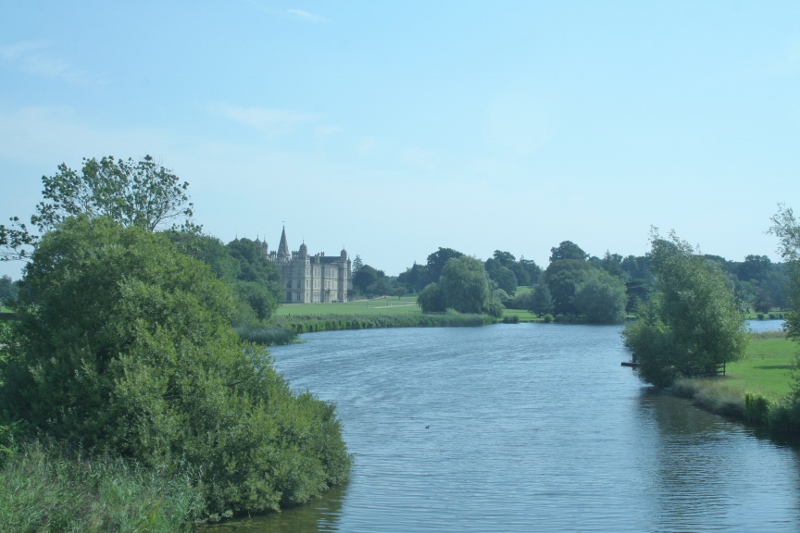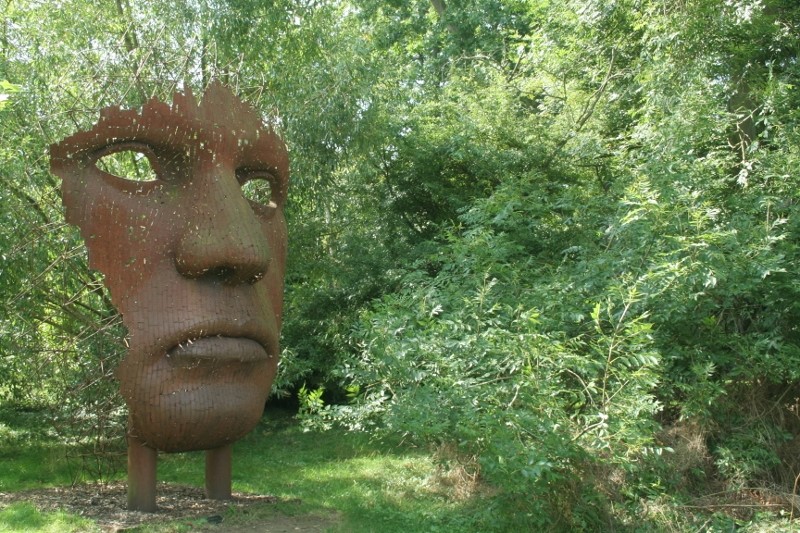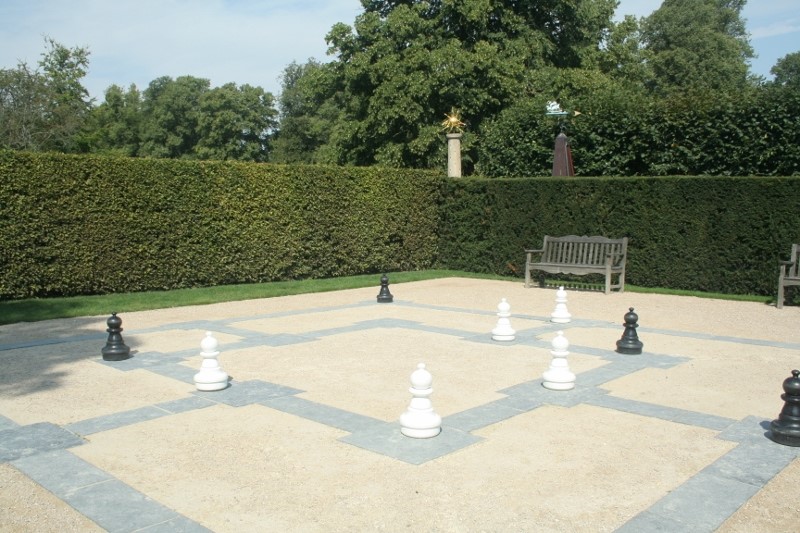Burghley House
An Elizabethan Prodigy House
Chapter 4 : Outside
The house is quite enormous – best viewed from the vantage point of the Lion Bridge. You can look across rolling parkland, over the very cunningly designed ha-ha to the mighty house.

The original gardens of Burghley would have been laid out in the Elizabethan style of parterres and formal beds. These were then superseded by works carried out by the famous gardener, George London, in the late seventeenth and early eighteenth centuries. Seventy years later, this too, was swept away as the ‘ English Landscape’ craze swept across the country. Lancelot ‘ Capability’ Brown was employed to create the parkland as it is visible today, with the lake on the south side of the house and the stone lion bridge giving a fabulous vantage point.
To the east of the house are the Sculpture Garden and the Garden of Surprises. These are both modern constructions, and each is almost worth the price of the admission by itself. The Sculpture Garden covers around twelve acres of mixed shrub, tree and grass planting. Lurking amongst the foliage is a collection of contemporary sculpture of extraordinary variety – some items reflecting the surrounding leaves and bark, and others stunningly surreal. To stroll in this outdoor art gallery is a real treat.

The Garden of Surprises, which opened in 2007, was inspired by the descriptions of the gardens at Burghley’s main home, Theobalds, in Hertfordshire (imagine owning not one, but two, of these enormous stately homes!).
Burghley, like many men of the period, was interested in gardens, and also in the burgeoning sciences of astronomy, mechanics and engineering. The Garden of Surprises contains a range of curious water features that sprinkle, spray and soak the unwary – although adults can manoeuvre round them with ease, children are endlessly delighted by the rogue splashings. There are also obelisks, sculptures and even a giant game of merrells (a type of nine-men’s morris).







